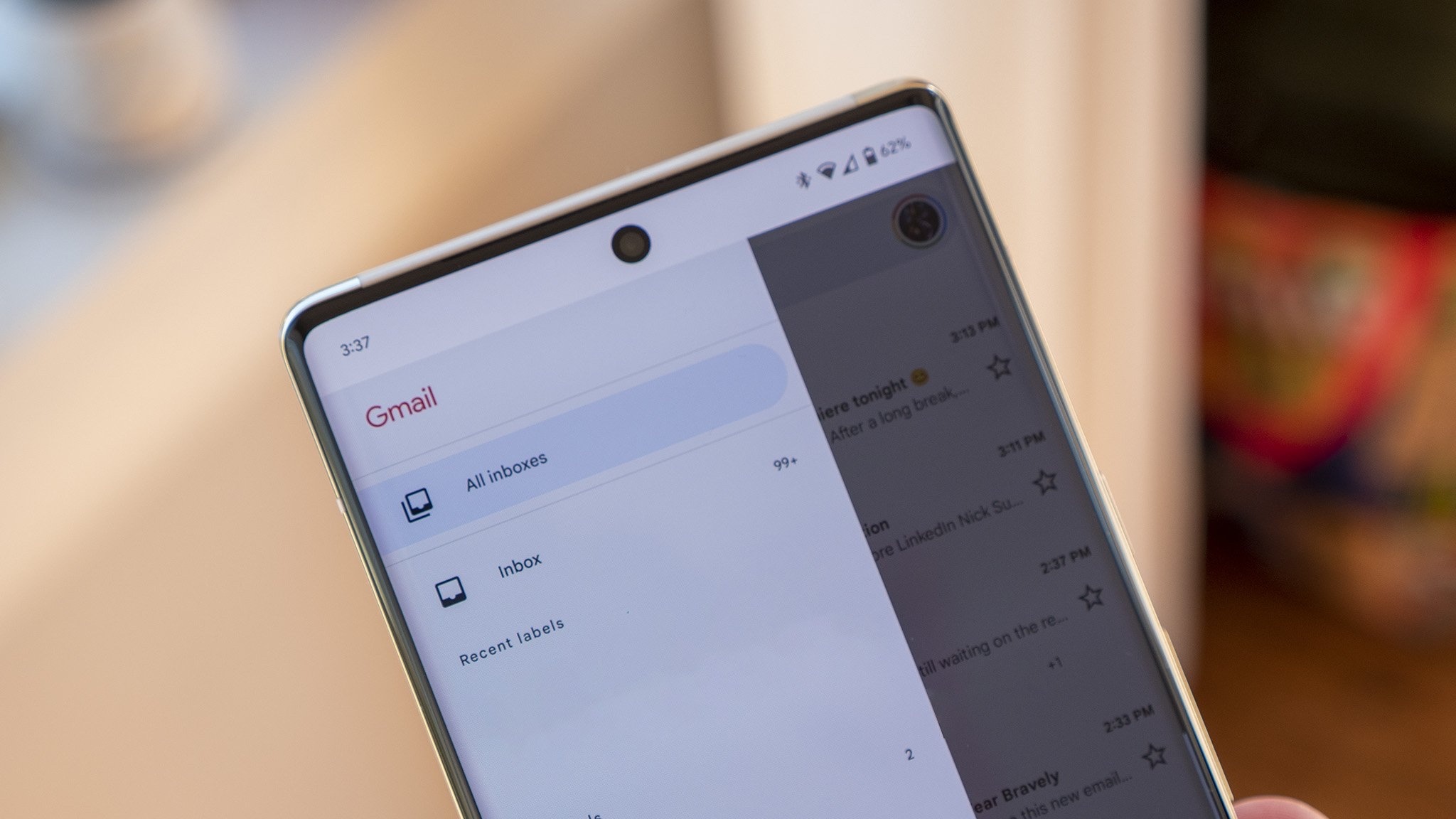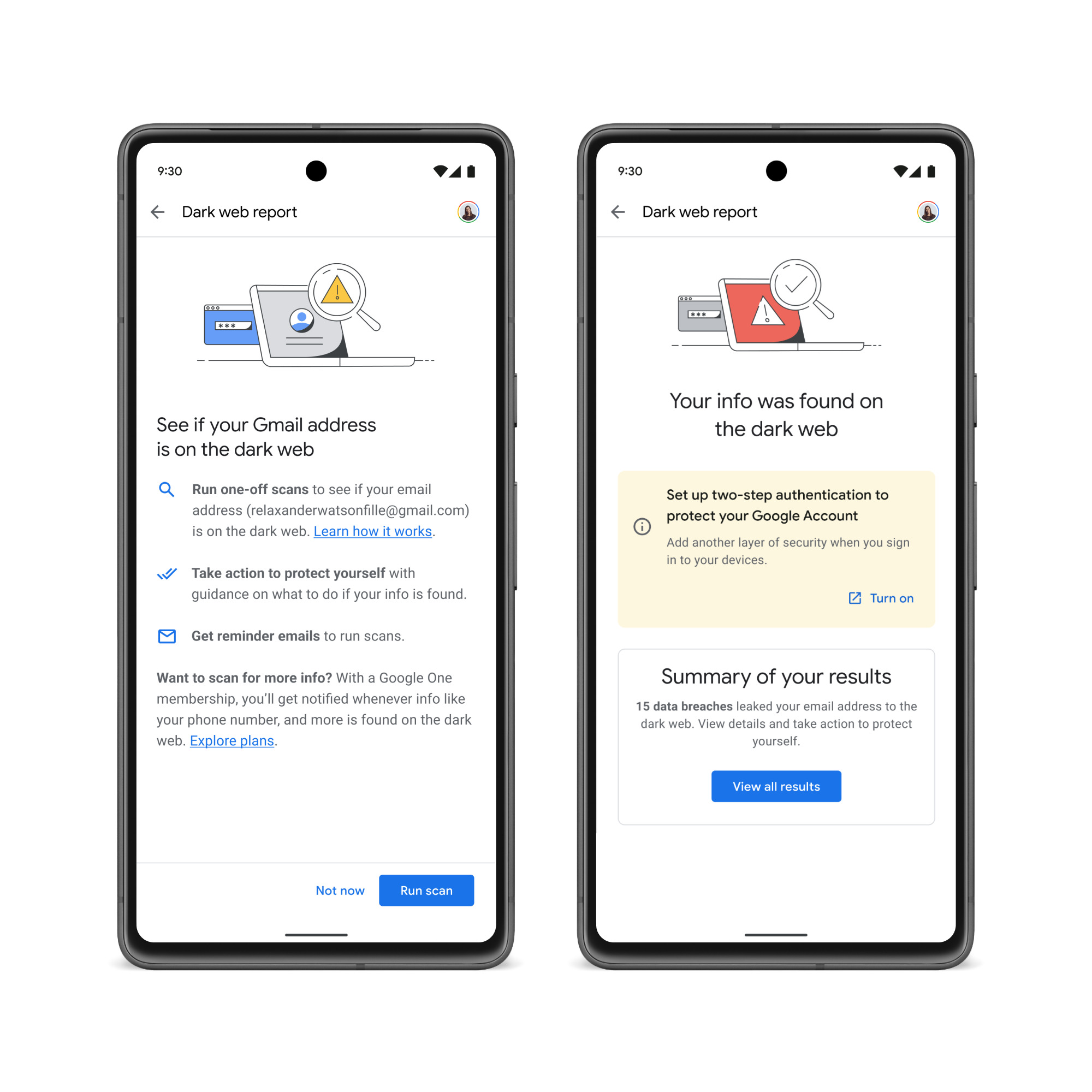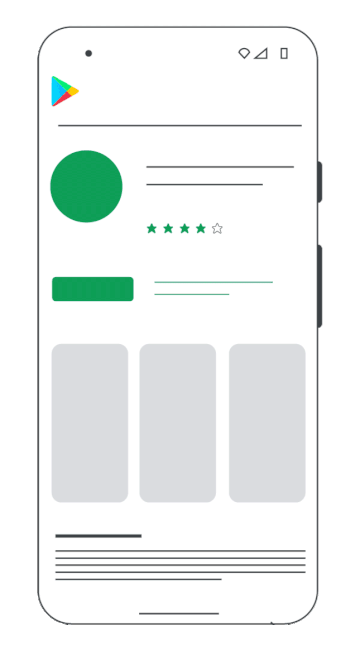
What you need to know
- Dark web reports are expanding from Google One subscribers to all Gmail users.
- The new "About this image" feature will help users identify the source of a photo found online.
- Google is giving users more control over their data in apps and Maps.
While Google I/O is filled with plenty of exciting new announcements, Google is also making some important ones regarding its efforts around safe browsing. The company is announcing a number of updates that will help users take more control over their data.
Previously available for Google One subscribers, Google is expanding its new dark web reports to all U.S. Gmail users over the coming weeks. This will allow anyone on the email service to scan their account to find out whether or not it shows up on the dark web, along with steps to take if it does appear.
This will also be available in international markets soon.

Google is also providing users with more control over their data in the apps they download and use. With Android 14, users will be informed when apps share their data with third-party advertisers, giving users the option to approve or decline these requests, starting with location data.
Users are also being empowered with the ability to delete their data whenever they want. Starting with Google Maps, the app is rolling out a new option to delete recent search history. Users can already do this in their Google Account's Web & App Activity, but this new option should make it even easier to hide recent searches in Maps.
In the Play Store, a new "Data Deletion" section of the app store's Safety section will allow users to easily request for their data to be deleted from an app. The company mentioned in April that developers would have to submit answers to data deletion questions by December, with the Play Store's new policy going into effect in 2024.

Google Drive already helps protect users from harmful spam, but the service will soon give users a new "spam view," similar to what they find in Gmail, that automatically sorts certain content into this new view and lets them review files that may be harmful (or not).
Google is also launching a new tool dubbed "About this image," which works similarly to other search tools like "About this result" and "About this author." It works to give users more context about an image, including when Google indexed it and where the image may have originated. Google says this can help you "evaluate the reliability of visual content you find online.
Lastly, the company is highlighting its efforts for safety across its services and on the web with moves like Google account passkey, a new Safe Browsing API to quickly identify harmful websites and files on Chrome and Android, and the expansion of its Content Safety API to enable services to now identify child sexual abuse material (CSAM) videos, in addition to images.







